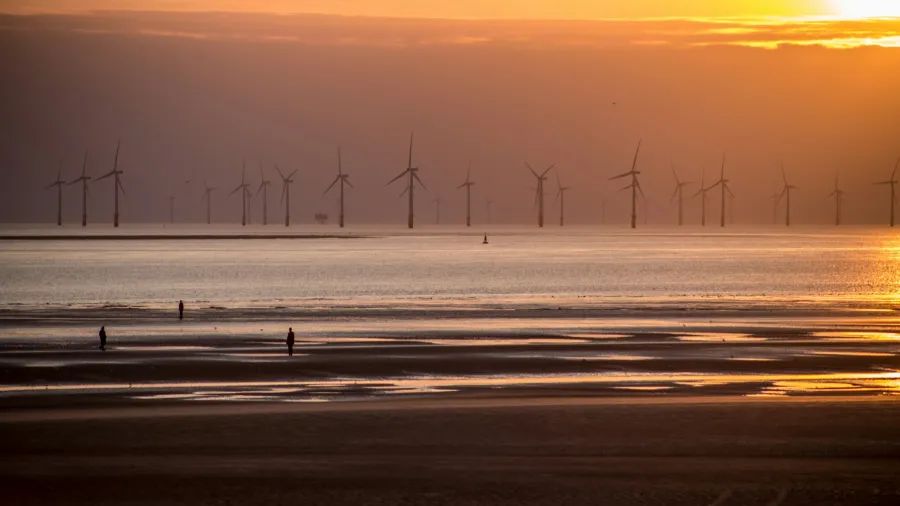
Developer-led approach poses uncertainty for South Korea’s offshore wind
Experts believe the government can streamline the process by taking the lead in site designation and subsea surveys.
OFFSHORE wind energy presents a significant opportunity for renewable energy growth in South Korea given its geographical constraints, but the country’s developer-led approach to deploying such projects presents some uncertainties in seeing things through.
Unlike in the US and other European markets where the licensing authorities pre-designate an area for wind development, South Korea requires developers to find their development sites, Grant Hauber, strategic energy finance advisor at the Institute for Energy Economic and Financial Analysis, said.
“[In other markets], what that does is enable preliminary studies to be done. It avoids being in sensitive areas, like where fishing or marine habitats, things that they do not want to disturb,” Hauber told Asian Power. “In Korea, it is much more of a free-for-all, where developers have to go out and delineate a site [and] preliminarily study and then use that as an occasion for the business license.”
Jinyoung Baek, managing director and partner at Boston Consulting Group, said companies need to measure the quality of wind on the coastline themselves. Once they have identified a location, they will have to proceed with processing the permits and resolving issues with stakeholders.
The random identification of sites also makes transmission planning to get the cable to the shore “super uncertain,” Hauber said.
He said cables do not necessarily follow a straight-line route in the sea bed as developers would also need to take into account the things they have to avoid. At times, around two to three substations will be needed for interconnections.
This presents another challenge for the Korea Electric Power Corporation which will be responsible for transmission interconnection.
Creating mistrust
This set-up leads to a lot of controversy and mistrust amongst fishing communities and environmental groups that protect marine habitats, adding more risks and uncertainty to offshore wind projects.
“Not having the actual site sort of predetermined and sanctioned by the government does not create a level playing field,” Hauber said.
Janice Cheong, policy and project manager at the Global Wind Energy Council (GWEC), said it is difficult to gain local consensus because there is no requirement under the developer-led approach to engaging with the local stakeholders early on.
Due to this, there is a need to incentivise local communities and focus on capacity building.
“From the local government side, a local regeneration vision can be in place early on that can build long-lasting social acceptance and support for development,” she said.
Cheong said capacity building and education to establish a workforce at a local level will help to “bridge potential gaps in understanding of offshore wind development.”
Offshore wind landscape
According to the GWEC, South Korea only has 150 megawatts (MW) of offshore wind projects running, far from its target of reaching 14.3 gigawatts (GW) by 2030. But overall, the country has a total of 624 GW of technical potential for offshore wind.
Reaching such targets could be beneficial, particularly for coastal city economies, as the project could bring an investment of around $62.6b (KRW87t).
Aside from this, the projects could provide over 770,000 job opportunities across value chains including positions such as marine engineers, factory workers, business, managers, and health and safety specialists, amongst others.
GWEC noted that developing a 500-MW offshore wind farm would already require 2.1 million direct person-days, on top of the various direct or induced jobs.
However, the current landscape is “extremely complex” due to the lengthy permitting processes, requiring developers to secure 22 different permits from 10 various government agencies. This takes the current permitting process between seven and 10 years.
Incentives are in place to boost the development of offshore wind projects in the country. One of which is the weighting scheme for renewable energy certificates (REC), with weightings for offshore wind reaching up to 3.7, Baek said.
“It’s a quite significant economic incentive. Based on this high REC weight, the operators expect to achieve a favourable project internal rate of return estimated between 8% and 10%,” he said.
Cheong also said that the sector is seeing strong momentum because of its large pipeline of projects, of which 28 GW have received electricity business licenses. The country has also conducted an annual auction for the 20-year fixed-price contract for wind for two years.
Policies needed
The government could also provide support by investing in the preparatory process ahead of bidding by leading the subsea surveys and laying out plots for project development, providing developers with information as to the type of technology they could use.
“If you make that freely available to bidders, that allows them to sharpen their pencil and come up with realistic proposals that are closer to what they would be able to implement,” Hauber said.
“Unless they have access to detailed subsea survey data and, you know, preliminary environmental assessments — which most do not — it is guesswork,” he said.
Aside from this, government stakeholders should also push for the One Stop Shop Bills, as well as lobby for the passage of “The Special Act for Promotion of Offshore Wind Power Development,” GWEC’s Cheong said.
The proposed legislation, which was not passed in the 21st National Assembly and needs to be re-tabled in the 22nd Assembly, will ease the seabed siting process and provide clear guidance for offshore wind projects.
“Licensing will be streamlined through clearly defined government roles in a very coordinated approach, very different to what we have seen previously in the developer-led process and consensus building with fisheries and other local communities will be mandated to begin early on,” Cheong said.
“With such a large project pipeline already underway, the post-legislation discussion on how to continue to progress existing projects under the developer-led approach and the projects who have currently obtained electricity business licenses is still very crucial and essential,” she added.
Baek also noted that the government is crafting a “zoning system” which will streamline and expedite permission processes as it designates specific areas for offshore wind development, allowing developers to “proceed more efficiently.”
A head start
Developing offshore wind farms remains expensive because of the upfront costs for required surveys such as the environmental impact assessments and transmission systems design.
Developers need to ensure that they also have highly reinforced piers to load massive fabrications or build the materials onshore before carrying them to the site.
Hauber added that they would also need places onshore for blade manufacturing, with some reaching 130 metres long each, if they plant to localise them.
“Given the very nascent nature of the wind farm offshore wind business, in Korea, a lot of these do not exist, or are not ready, despite the fact that Korea probably has the biggest head start,” he said.
Hauber said the country is well-positioned to boost offshore wind because of its massive steel and shipbuilding industries, along with its port facilities that have to be customised to accommodate offshore wind.
However, this may take time and there needs to be a promise for several project rounds to allow investors to come in.
“That comes back to the government creating the policy and the preliminary physical conditions to allow that to happen. The good news is that the government policy targets for 2030 and 2050 imply that they want something big. But the policy situation right now does not meet that ambition,” he added.
Looking ahead
The next five years would be critical for South Korea as the country has to ensure that the developers awarded with projects are moving forward with their progress cost-effectively and on reduced timelines, Hauber said.
Aside from this, the government also need to develop the local supply chain.
“It may take accepting that some things are going to be fabricated in other countries and brought in and integrated in Korea, for the first round or two projects. It doesn’t mean things have to stay that way, or will stay that way,” he said, adding that the country would prefer having to manufacture materials within its backyard.
“I am bullish on this. I think five to 10 years is when this is all going to come together,” he said.
South Korea is also advancing in technologies, particularly for offshore wind which will be needed for deep-water installations that are planned off the coast of Ulsan, Shinan, and other regions, said Sung-Sam Ryan Moon, lead of the Energy Investment Team at KPMG Korea.
Partnerships with global wind energy firms are also beneficial in boosting local capabilities, along with investments in nacelle assembly, project execution, and maintenance, Moon added.
Baek, on the other hand, said the country could develop around 8 GW to 9 GW. To hit the 14.3-GW target, the government should roll out more incentives for companies.
South Korea should also address potential grid issues to accommodate more renewable energy. Baek noted that in South Jeolla province, no more solar farms could be developed until 2030 due to grid congestion.
Some wind projects that are under development could proceed as they have already secured grid connections, he said.
Another key challenge that the country could face is the government’s preference for nuclear power under the 10th Basic Energy Plan, shifting priority to nuclear compared to the renewable industry, Attaurrahman Ojindaram Saibasan, senior power analyst at GlobalData, said.
According to the 10th Basic Plan for Long-term Electricity Supply and Demand issued by the Ministry of Trade, Industry and Energy in January 2023, renewables will account for 21.6% of the generation mix by 2030 and 30.6% by 2036.
This is lower than the 32.4% share of nuclear power by 2030 and 34.6% by 2036.
Hauber also noted that nuclear power plants are expensive. An investment of $10b (KRW13.9t) could already support the development of several solar and wind projects, even before the country could break ground for a nuclear project.
“I am not saying to divert all money to one thing. A portfolio approach is always better. But right now, they may not get the potential that they could out of offshore wind, which is essentially a free source of energy,” he said.


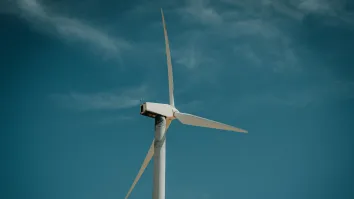
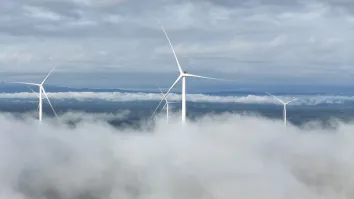
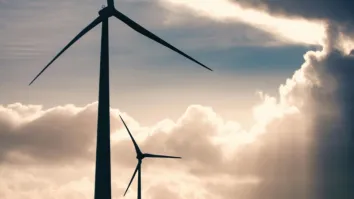
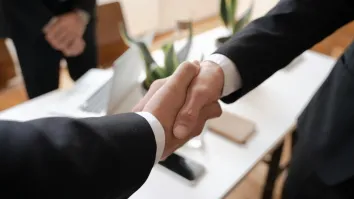













 Advertise
Advertise






